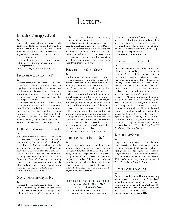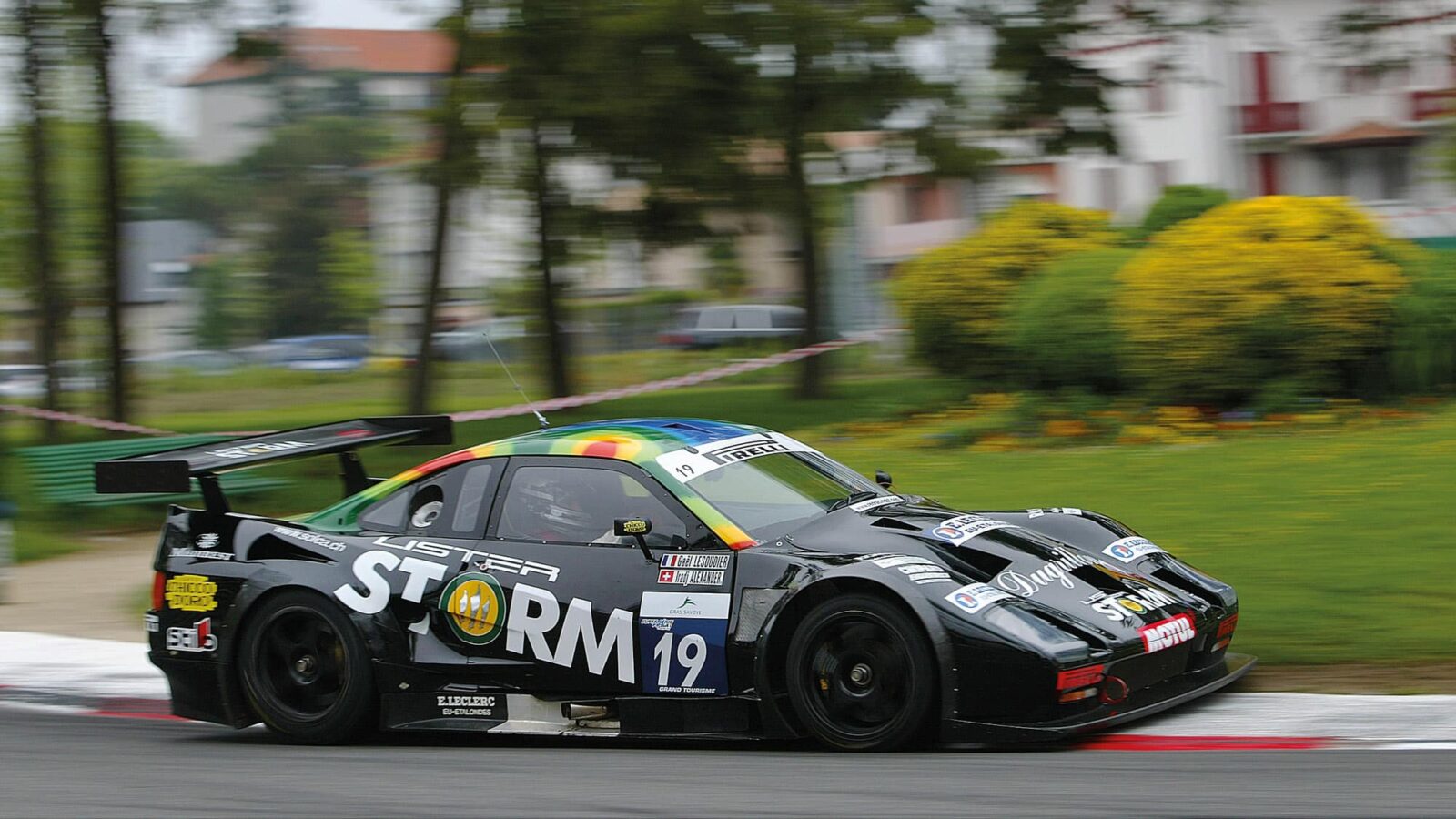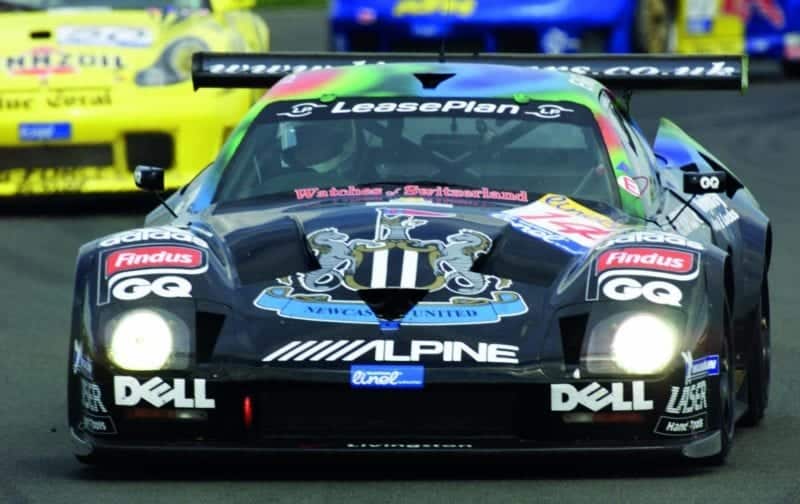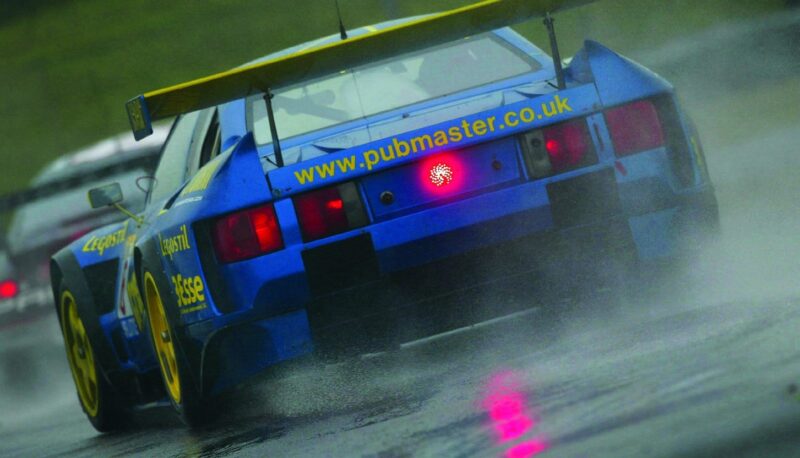
BBC should stand its ground
BBC should stand its ground Sir, How disappointing that the BBC has yielded live coverage of 10 Grands Prix a year to BSkyB, part of the highly-respected Murdoch empire. So,…

If you’re making a list of the fastest, most outrageous cars of the 1990s, this is the one you’re most likely to forget. Up against the might of the Ferrari F40, Lamborghini Diablo, Bugatti EB110, McLaren F1 and such, what chance did little old Lister have?
After all, Lister only built four, priced them well out of their league, and the Storm faded from showrooms as fast as it had blown in.
But here are some headline figures worth remembering. A hulking 7-litre V12 adapted from a Le Mans 24Hrs winner; a top speed of 208mph that made it the fastest four-seater car in the universe in its time; and after its road career came to a premature end it actually made a mighty fine race car.
Despite being a low-volume manufacturer, Lister already commanded respect in the racing world thanks to its work first with MG and Bristol power since its formation in 1954, and then its founder Brian Lister’s link with Jaguar that gave us the eternal Knobbly.
But following the financial trouble which led to the original company’s closure in the mid-1960s, all fell silent in the Lister camp, until engineer Laurence Pearce resurrected the company in 1986, primarily to tune special edition Jaguar XJS road cars. Pearce began by expanding the 5.4-litre V12 in each of them to a full 7 litres, endowing them with a 200mph top speed, adding new body panels and charging just over £100,000 for each of the 90 this new version of Lister produced.
But to truly get back to its former glories, Pearce knew Lister needed a flagship model of its own rather than a tuned version of somebody else’s car. The Storm was brewing.

The forerunner to Superleague Formula? A sponsorship deal with Newcastle United boosted Bailey and Campbell-Walter’s FIA GT title bid in 2000
To start, Pearce used his Jaguar connection to secure a stock of engine parts from Tom Walkinshaw’s Le Mans-winning XJR-12 Group C operation, basing the Storm’s heart around the same huge 24-valve V12 that powered Britain back to glory at La Sarthe in 1990 – and in doing so gave the Storm the largest engine fitted to a production car since World War II.
Then came a lightweight aluminium monocoque chassis, with the engine slotted up front, but deep down and as far back as it could go to centralise the weight without needing the driver to sit on top of it.
Only then came the coachwork, with its distinctive sloping bonnet smoothly fitted over that lump of an engine. Lister used carbon fibre for many of the panels, and also raided the Storm for parts bin of other brands to complete the design – the rear GT racing… at lights are from an Audi 80.

Complete with its Audi 80 rear lights, the Storm boasted the largest engine fitted to a production car since WWII
When it was launched in 1993, the Storm was priced at a staggering £220,000. Few were prepared to pay that, so only four cars exited the factory doors before the project was canned and Lister did what it historically did best. Went racing. With a high-powered production model on its books, Lister homologated the Storm for GT racing… at exactly the wrong time. The first version – the GTS – debuted at Le Mans in 1995, right into the path of McLaren’s dominant F1 GTR. Then, just a year later, Porsche changed the game with its 911 GT1 – essentially a prototype race car for the road – and that spelled the end for production GT racing before the Storm even got a fair chance at it.
“Lister homologated the Storm at exactly the wrong time”
A second version, the GTL, was released for 1997, using a carbon chassis and bodywork and more streamlined aero in the hope of upsetting the GT1 establishment, but it stood little chance against the might of both Porsche and Mercedes’ CLK GTR. However, the company’s persistence did eventually pay off.
With costs rising, GT1 was finally canned in 1999, opening the way for Lister to shine. A GTL shared by Julian Bailey and Jamie Campbell-Walter won that year’s British GT Championship before the pair did the same in the 2000 FIA GT Championship, winning five of the 10 rounds in a works-run GTM (a GT2-spec car with less aero and a longer nose). Mike Jordan and David Warnock secured a second British GT title for the Storm in 2001, but its star was starting to wane.
Newer rivals from Porsche, Saleen, Ferrari and Chrysler’s Viper gradually pushed the Storm down the pecking order, and Lister lost focus when it began work on the ill-fated and expensive Storm LMP a few years later.
The Storm’s racing exploits eventually ended in 2005, but it had made far more of a mark in Lister’s traditional arena than its attempts at taking the road by, err, storm.